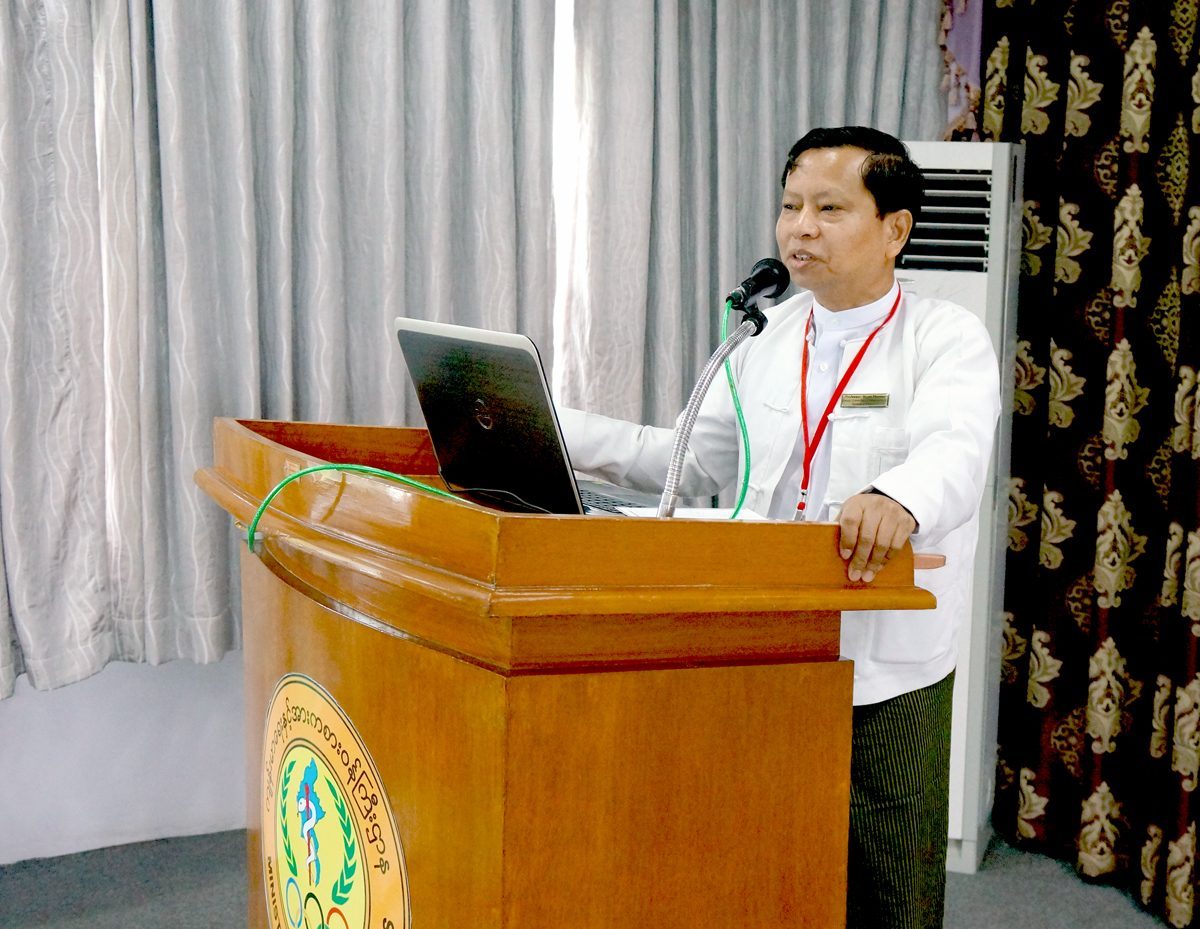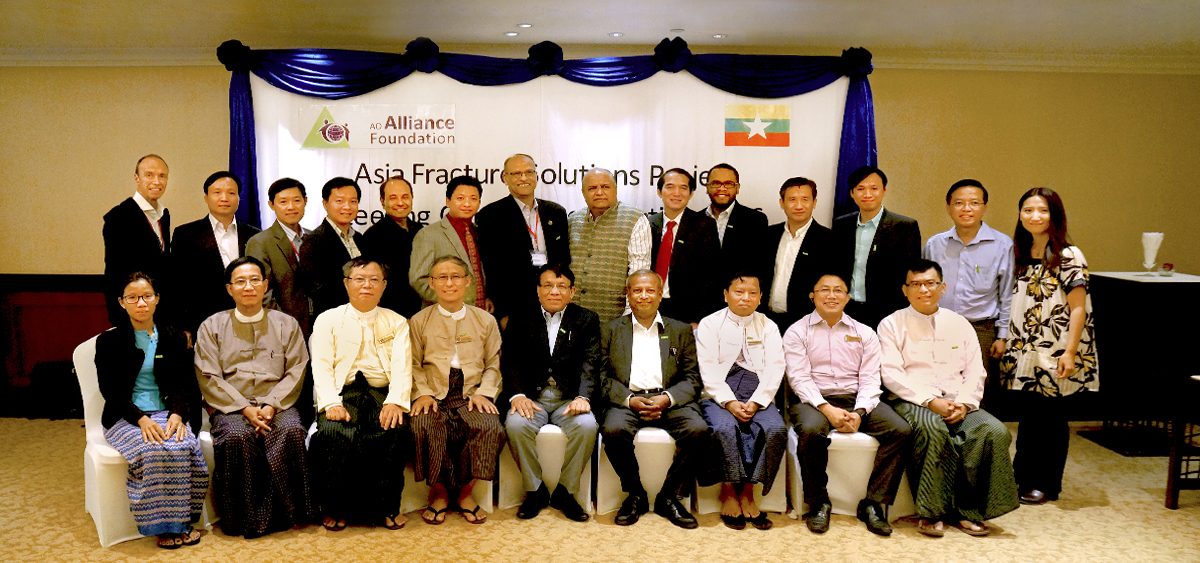The 2nd AOAF steering committee meeting was held on 6 September 2016 in Yangon
The steering committee of the AO Alliance “Fracture solutions for Asia” met for the second time on 6 September 2016 in Yangon, Myanmar, to review past activities and discuss plans for the upcoming years.
“Fracture solutions for Asia” is a 3-year project of the AO Alliance Foundation (AOAF) that aims to deliver resource-appropriate fracture-care education to eight low- and middle-income countries (LMICs) in Asia, namely Bangladesh, Cambodia, Laos, Mongolia, Myanmar, Nepal, Sri Lanka and Vietnam. The project is currently valued at US$3 million.
Up to two surgeon representatives from each of the eight countries (with the exception of Mongolia) participated in the steering committee meeting. The local hosting organization, the Myanmar Orthopaedic Society, had a delegation of six surgeons and one operating room personnel (ORP) at the meeting. The local hosts were led by Professor Myint Thaung, outgoing Society President, and the incoming President, Professor Maung Mg Htwe, was also able to join the team.

Plans for more local fracture care training and education
At the steering committee meeting, the attendees reported on and evaluated the activities that were carried out in 2016, and finalized upcoming education events for 2017 and 2018, assigning responsible parties for the projects.
One of the items discussed was the need for national courses to be less dependent on regional teachers. As such, a Faculty Education Program is planned for 2017, and participation will be offered to 16 AOAF faculty.
Another project that was brought up was offering fellowship opportunities to young trauma and orthopedic surgeons. In line with this, more AO Alliance Reference Fellowship Centers will need to be recruited as soon as possible. These centers should be able to offer the type of training the young surgeons will be able to apply when they return to their native hospitals/areas of clinical practice.
The need for more advanced fracture care education was also discussed. As technology evolves and LMICs gain access to such technology, there is a need to train medical personnel accordingly. However, the extent and utility of such training will still have to be carefully evaluated and the roll out controlled to achieve the necessary goals.
Working synergistically between neighboring countries was also discussed by the committee.
AO Alliance Foundation symposium: Fracture care complications in LMICs
The steering committee members were part of the faculty of the AOAF clinical symposium that took place on 5 September 2016, a day before the committee meeting. Focusing on fracture complications in LMICs, the symposium was led by Professor Myint Thaung from Myanmar and Dr Ram K Shah, AOAF Asia director from Nepal. The symposium was structured to facilitate small group discussions of cases, an educational method designed to maximize clinical learning and retention.
The symposium was attended by 75 participants, and received excellent feedback from the surgeons-in-training who attended the event. The success of the event is largely because of the support of the Myanmar Orthopaedic Society and the Sea Lion Co Ltd in Myanmar.
The 2017 steering committee meeting
A similar symposium will also be held in conjunction with the next steering committee meeting, scheduled for June 2017 in Laos. AOAF is fortunate to have strong local surgeon leaders in the country, Dr Songvinay Phiousodalith and Dr Khamhiane Inthava, who will help ensure the activities of “Fracture solutions for Asia” continue to be fruitful.
